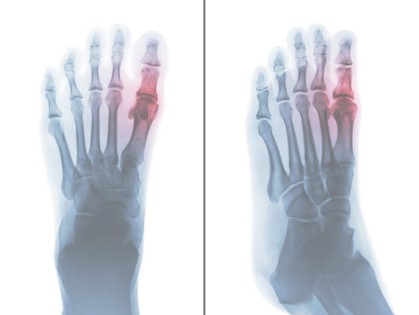Why is the Metatarsophalangeal Joint Important for Foot Health?
Why is the Metatarsophalangeal Joint Important for Foot Health?

The human foot is a complex structure comprising 26 bones, 33 joints, and numerous ligaments and tendons, all working together to support the body’s weight and enable movement. Among the many joints in the foot, the metatarsophalangeal joint (MTP joint) plays a crucial role in maintaining foot health and function. Understanding the significance of the MTP joint can provide valuable insights into how to care for your feet, prevent injuries, and address foot pain effectively.
In this blog post, we’ll explore the anatomy of the metatarsophalangeal joint, its functions, common issues affecting it, and tips for maintaining its health. By the end of this article, you’ll understand why the MTP joint is vital for your overall foot health.
What is the Metatarsophalangeal Joint?
The metatarsophalangeal joint is the point where the metatarsal bones of the foot connect to the phalanges (toe bones). Each toe has its own MTP joint, and there are five in total, corresponding to each of the five toes. These joints are essential for the movement and flexibility of the toes, allowing them to bend and straighten as needed.
Anatomy of the Metatarsophalangeal Joint
The metatarsophalangeal joint consists of several key components:
- Metatarsal Head: The rounded end of the metatarsal bone that articulates with the phalange.
- Proximal Phalanx: The first bone in the toe that connects with the metatarsal head.
- Articular Cartilage: Smooth cartilage that covers the surfaces of the bones, reducing friction and facilitating smooth movement.
- Capsule and Ligaments: A joint capsule surrounds the MTP joint, reinforced by ligaments that provide stability and limit excessive movement.
Functions of the Metatarsophalangeal Joint
The MTP joint plays a crucial role in foot biomechanics:
- Toe Movement: It allows the toes to flex (bend downward) and extend (straighten), which is essential for walking, running, and balancing.
- Shock Absorption: During activities like walking or jogging, the MTP joint helps absorb the impact and distribute forces evenly across the foot.
- Balance and Stability: Proper function of the MTP joint contributes to overall balance and stability, preventing falls and improving gait.
Common Issues Affecting the Metatarsophalangeal Joint
Several conditions can affect the metatarsophalangeal joint, leading to pain and functional limitations:
- Bunions: A bunion is a bony bump that forms at the base of the big toe, causing misalignment of the MTP joint and leading to pain and discomfort.
- Hammertoe: This condition involves abnormal bending of the toe at the MTP joint, often resulting in pain and difficulty finding comfortable footwear.
- Gout: Gout is a form of arthritis caused by the accumulation of uric acid crystals in the MTP joint, leading to sudden and severe pain, redness, and swelling.
- Arthritis: Osteoarthritis and rheumatoid arthritis can affect the MTP joint, causing pain, stiffness, and reduced range of motion.
- Morton’s Neuroma: This condition involves a thickening of the tissue around a nerve leading to the toes, causing pain and discomfort in the MTP joint area.
Symptoms of Metatarsophalangeal Joint Problems
Common symptoms of issues with the MTP joint include:
- Pain: Often felt at the base of the toe or along the joint line.
- Swelling: Inflammation and fluid buildup around the joint.
- Stiffness: Reduced ability to move the toe fully.
- Redness: Skin changes around the joint, especially in cases of gout or infection.
- Deformity: Visible changes in toe alignment, such as bunions or hammertoe.
Diagnosing Metatarsophalangeal Joint Issues
Diagnosis typically involves a combination of medical history, physical examination, and imaging studies. Your doctor may perform:
- Physical Examination: Checking for tenderness, swelling, and range of motion.
- X-rays: To visualize bone structure and detect deformities or joint damage.
- MRI or Ultrasound: For a detailed view of soft tissues, ligaments, and cartilage.
Treatment Options for Metatarsophalangeal Joint Problems
Treatment approaches vary depending on the underlying condition:
- Conservative Treatments: Includes rest, ice application, anti-inflammatory medications, and custom orthotics to relieve pain and improve function.
- Physical Therapy: Exercises to strengthen the muscles around the MTP joint and improve flexibility.
- Footwear Modifications: Wearing shoes with proper support and a wide toe box to reduce pressure on the MTP joint.
- Surgical Intervention: In severe cases, procedures such as bunionectomy or joint fusion may be necessary to correct deformities and relieve pain.
Preventive Measures for Maintaining Metatarsophalangeal Joint Health
To keep your MTP joints healthy, consider the following preventive strategies:
- Wear Proper Footwear: Choose shoes with adequate support, cushioning, and a comfortable fit.
- Maintain a Healthy Weight: Excess weight puts additional stress on the feet and joints.
- Exercise Regularly: Engage in activities that strengthen foot muscles and improve flexibility.
- Avoid High-Impact Activities: Reduce the risk of injury by avoiding activities that excessively stress the MTP joints.
FAQs
- What causes pain in the metatarsophalangeal joint?
- Pain can be caused by conditions such as bunions, hammertoe, gout, arthritis, or Morton’s neuroma.
- How can I relieve metatarsophalangeal joint pain at home?
- Rest, ice application, over-the-counter pain relievers, and wearing comfortable shoes can help alleviate pain.
- Are there exercises that can strengthen the metatarsophalangeal joint?
- Yes, exercises that stretch and strengthen the toes and foot muscles can improve joint function and reduce pain.
Conclusion
The metatarsophalangeal joint is vital to foot health, facilitating toe movement, shock absorption, and overall stability. Understanding its function and common issues can help you take proactive steps to maintain its health and address problems effectively. Whether you’re dealing with pain, discomfort, or simply want to ensure optimal foot health, knowing more about the MTP joint can guide you toward better care and treatment options.
If you have any concerns about your foot health or need personalized advice, please reach out to the Foot and Ankle Center of Arizona. Our experienced team is here to provide expert care and support for all your foot and ankle needs.
